Boysenberry Bliss: Follow These Tips For Juicy, Flavourful Berries
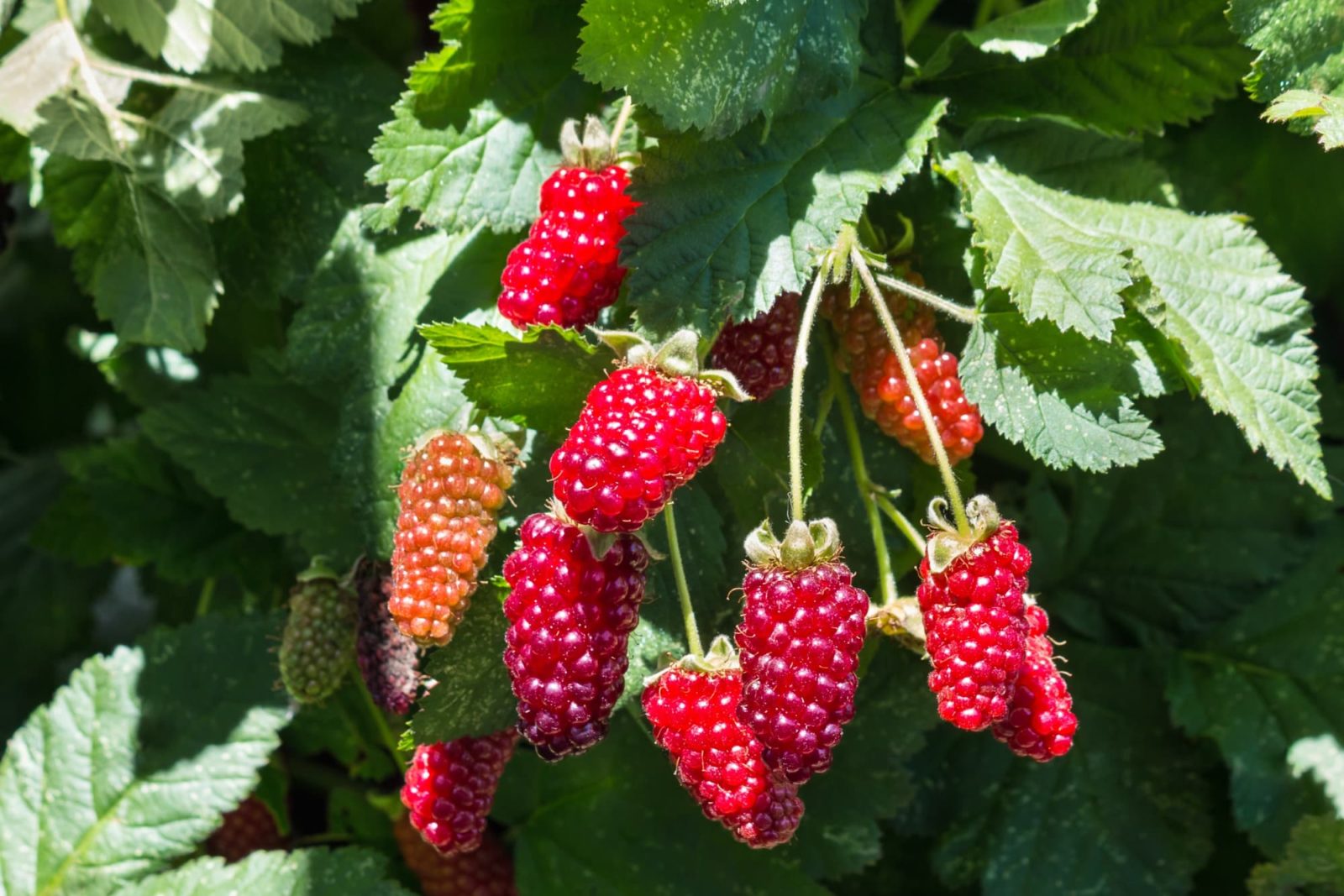
FRUIT > BOYSENBERRY
Reviewed By DAN ORI

Dan has over 27 years’ under his belt caring for plants and gardens. Working as a Horticultural Instructor and Consultant, he draws on a diverse range of experience that includes working as a Head Gardener, Tree Surgeon, Garden Centre Trouble Shooter, and writer of academic papers. Dan has a Level 3 Diploma in Horticulture and is currently a candidate for the RHS’s most prestigious award – The Master of Horticulture.
BOYSENBERRY GUIDES
While the juicy boysenberry’s balance and flavour vary by ripeness, at any given point it combines such luscious tones of sweet, tangy and tart that you’ll want another handful.
Made to order for berry-lovers, the Boysenberry is a Raspberry, Blackberry, Dewberry and Loganberry all rolled up into one.
Developed by Rudolph Boysen in California in the early twentieth century, this berry saw its highs and lows in popularity over the succeeding decades.1The Boysenberry and The Chicken Dinner. (2022, May 2). CSUN University Library. Retrieved September 5, 2023, from https://library.csun.edu/SCA/Peek-in-the-Stacks/walter-knott
Overview
| Botanical Name | Rubus ursinus × idaeus |
| Common Name(s) | Boysenberry |
| Plant Type | Perennial shrub |
| Native Area | Southern California |
| Hardiness Rating | H6 |
| Foliage | Deciduous |
| Flowers | Large, white open flowers; five papery petals flared open; numerous conspicuous stamens and pistils |
| When To Plant | October to May |
| Harvesting Months | July |
Sunlight
Preferred
Full sun
Exposure
Sheltered
Size
Height
1 – 2M
Spread
1 – 2M
Soil
Preferred
Most fertile soils
Moisture
Well-drained
pH
Neutral
New cultivars, including thornless ones, were developed and Boysenberries gained popularity in new regions, such as the UK, though they struggled to retain that popularity.
Boysenberry is a bramble or aggregate fruit, like the ones it is derived from, which looks like an oblong and considerably bigger, deep purple blackberry.
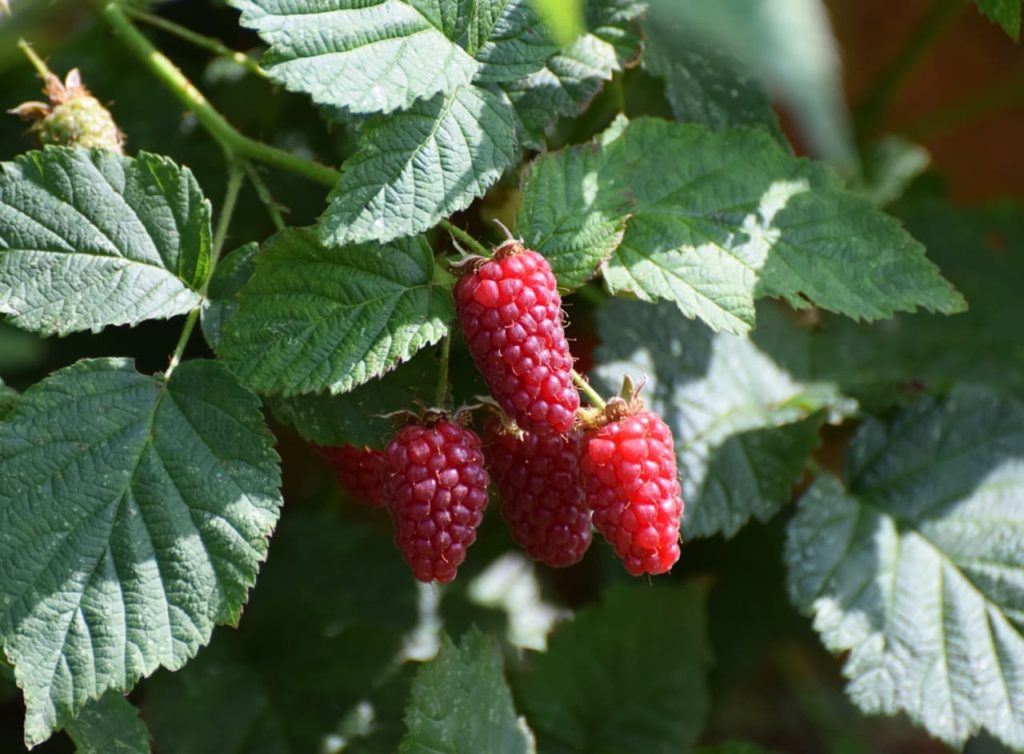
These wonderful berries combine sweet, tangy and tart flavours.
They are rather delicate and do not keep and transport well but they are absolutely mouth-watering when enjoyed fresh.
Furthermore, these berries are simply terrific for preparing preserves, sauces, compotes and pies.
As for the Boysenberry shrub, it sends up appealing canes that may be mistaken for vines.
How To Grow Boysenberry
Soil Requirements
Boysenberry bushes will flourish in rich, fertile, well-draining soil.
A sandy, chalky loam fairly generously amended with organic compost and well-rotted (cattle) manure would be ideal.
To ensure very good drainage, add grit or perlite.
These plants grow best in soil with a neutral pH.
Propagation Methods
Boysenberry plants can be propagated by the home gardener fairly easily via greenwood cuttings of first-year canes in summer.
Prepare small pots with potting compost amended with perlite and sand, with a deep layer of sand and perlite at the top, then dampen the medium.
Take 15-20cm lengths from first-year canes from the greenwood canes, making the cut just under a leaf node.
Leave 2-3 leaves near the top of each cutting and remove the rest.
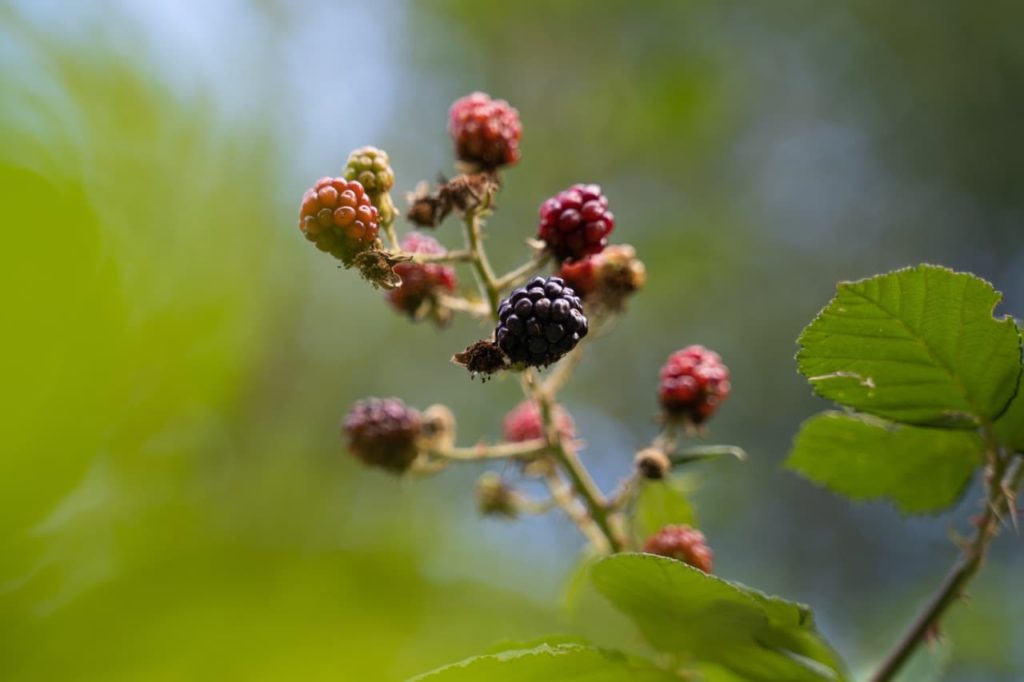
Dip the bases of the cuttings in a rooting hormone or in cinnamon and honey.
Insert into the pots one-quarter to one-third of the length of the respective cutting.
Cover the cuttings with tents made of clear polythene sheets to increase humidity.
Each tent should have some small punctures in it and should not touch the cutting.
Keep the pots in bright but indirect light and moisten the soil daily.
“You can take a non-flowering or fruiting stem cutting, stick it straight in the ground and it will often take,” shares Master Horticulturist Dan Ori.
Planting Guidelines
Plant Boysenberry about two weeks after the last frost in your region, which will usually be sometime in April or May or when dormant from October onwards.
Boysenberry plants should be planted in full sun in a sheltered position.
A north-facing aspect is to be avoided.
Do not plant Boysenberries where vegetables are or have been planted.
The reason is that some vegetables, such as potatoes and capsicums, are well known to leave behind pathogens that Boysenberry plants can succumb to.
Prepare the type of soil outlined above and cultivate the bed deeply, moisten the soil before planting and then space plants by 80-100cm.
If you are transplanting a nursery-bought start or plant, be certain to plant it no lower than it was in the pot.
Boysenberry Plant Care
Light & Temperature
Boysenberry brambles should be sited in full sun in the UK.
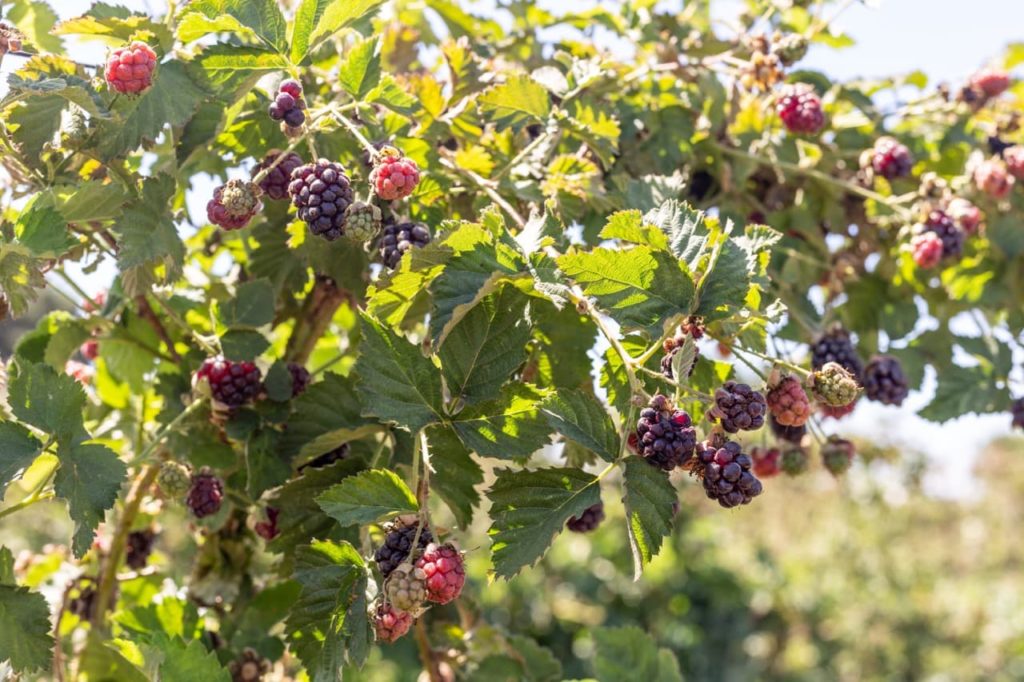
In the chilliest regions of the country, it would be a good idea to protect these plants during a harsh winter.
Both the root system and the canes should be covered with horticultural fleece.
Otherwise, though a harsh winter will probably not kill the plant outright, it may well kill or damage the coming year’s fruiting canes (second-year canes).
Apart from that, the temperature ranges in most parts of the UK are perfect for growing Boysenberries.
Watering & Feeding
Boysenberries require a fair amount of water, so aim to keep the upper 2-3cm of soil continuously moist.
A total of 3-5cm of water per week should be just right.
Hot, dry weather will increase the plant’s water needs.
Over autumn and winter, keep the roots hydrated by watering at a reduced volume and lower frequency.
Feed the plants once in early spring with an all-purpose, balanced, slow-release fertiliser.
We suggest that you dilute the fertiliser to about 75% of the manufacturer’s specifications.
Mulching
Though Boysenberries are fully hardy and the British summer will not affect this shrub, it would be beneficial to mulch it during the peak of summer to conserve moisture and during the equivalent trough of winter, to protect the roots from a hard frost.
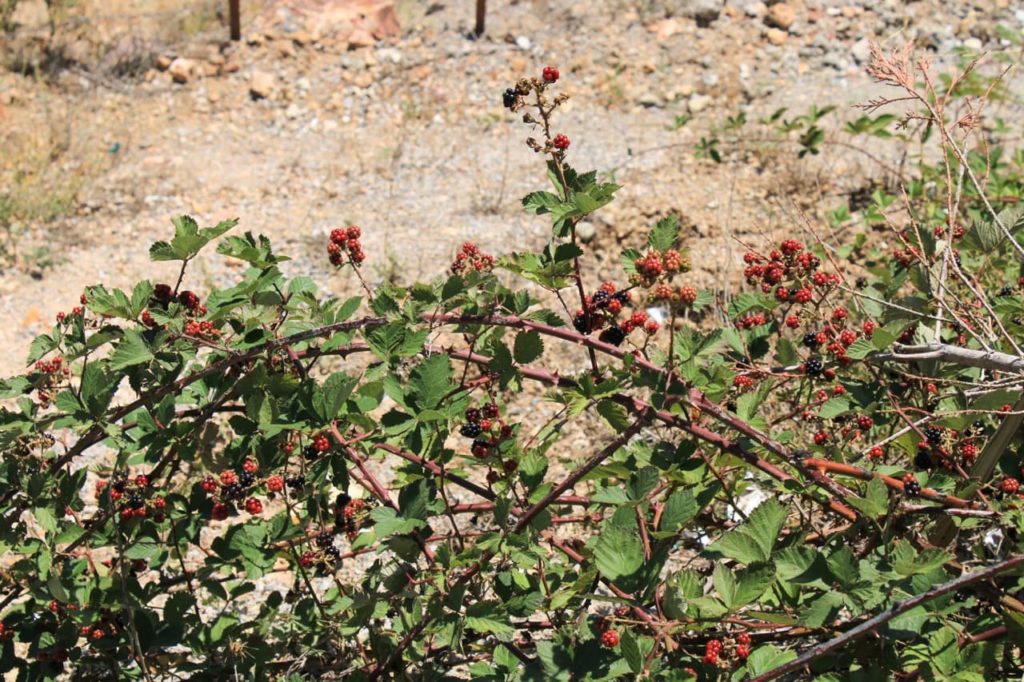
A 10cm layer of straw and hay mulch will do very well.
Remember to leave a ring around the centre of the plant, mulching about 8cm away from the centre.
Training & Support
The species plant and many or most cultivars have trailing canes and, as a result, need support.
Keep in mind that canes have a two-year lifespan and after two years they should be cut down at the ground, so no training is necessary.
The best type of trellis for Boysenberry canes is a latticed one made of narrow strips of wood or wire.
In early spring, just when you see fresh growth emerging, ensure that the second-year canes (floricanes) are growing on the trellis.
Straighten, fully or partially, those that are growing along the ground.
Canes will be supported on the trellis in a fanned-out form, where outer canes will be slanted outward.
Outer canes and obstinate canes may be fastened to the trellis with garden wire or plant ties.
Pruning
Boysenberry plants should be pruned in autumn after you wind up your harvest.

Cut down and remove all second-year canes.
These are the ones that are grey-brown and have produced fruit.
If first-year canes, which are green, number 9 or more, thin them.
Choose the most vigorous and longest 6-8 canes and cut the others off at ground level.
These canes’ green side shoots will bear berries the following year.
Laterals that are longer than about 30cm should be trimmed to 25-30cm.
Harvesting
Boysenberries are among the most delicate and perishable of berries, which has a strong influence on how they have to be picked and stored.
The harvesting season typically runs from mid-July to mid-August.
Individual berries within clusters will ripen over different days, so it is best to pick Boysenberries every 2-3 days over the course of a month.
Simply pluck the berry off the stem with a downward pull.
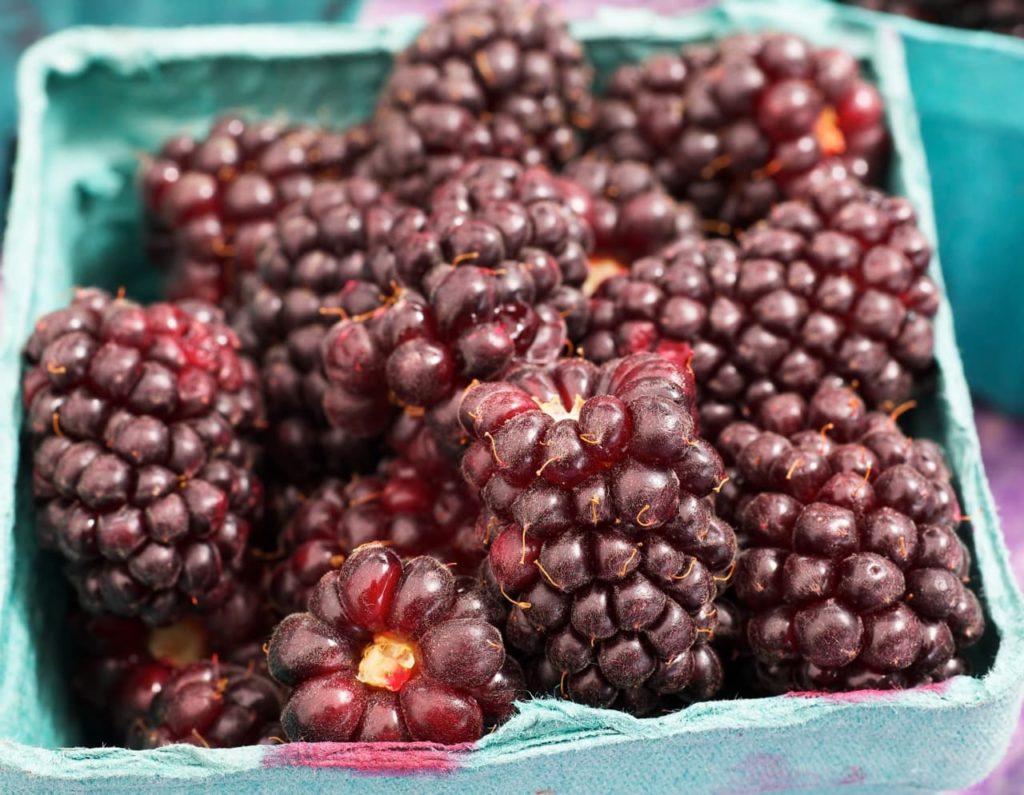
When berries progress from reddish-purple to deep blackish-purple, they are at their peak and should be picked.
Boysenberries are notorious for their susceptibility to bruising and getting squished, so take a shallow basket in which the fruit won’t be stacked more than two layers high.
They can be kept in a fruit bowl or brown paper bag in the fridge for 4-5 days.
Common Problems
Boysenberries are prone to their fair share of pests and fungal diseases.
The pests they are mostly vulnerable to, in ascending order of seriousness, are aphids, various mites and raspberry beetles.

The last-named pest, or its larvae, causes serious damage to the fruit.
Fungal diseases include anthracnose and rusts.
Controlling these diseases on a fruiting plant is rather difficult because of the inability to use chemicals.
Good gardening practices, including correct watering techniques, good airflow and the use of non-contaminated soil, will reduce the chances of Boysenberry plants contracting fungal diseases.
References
- 1The Boysenberry and The Chicken Dinner. (2022, May 2). CSUN University Library. Retrieved September 5, 2023, from https://library.csun.edu/SCA/Peek-in-the-Stacks/walter-knott

